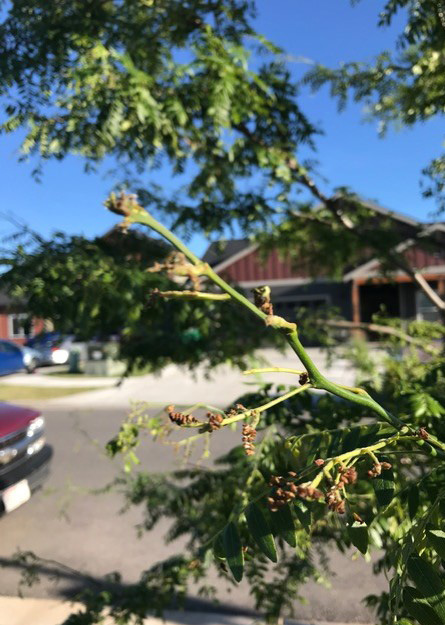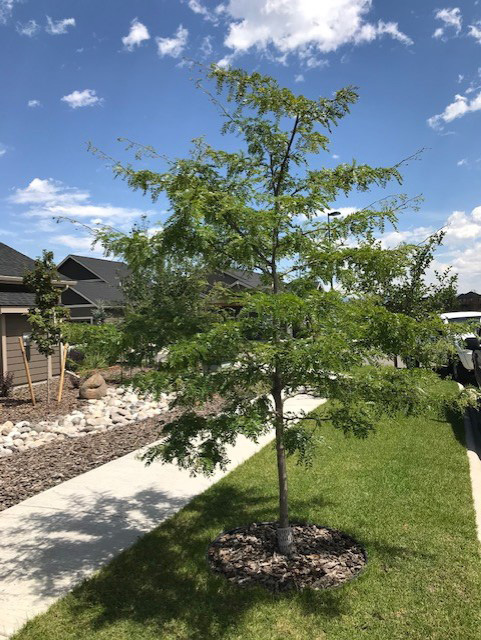Honeylocust Podgall Midge

Figure 1. Leaf damage from the honeylocust podgall midge. Photo by Eileen Kenney
Honeylocusts have been looking thin, showing brown tips, and defoliating. This is likely due to the honeylocust podgall midge. These midges are common every year, but damage from the pest is more evident this year.
Damage:
- The immature maggots feed on developing leaves, causing thickened, pod-like galls.
- The galls darken, dry, and drop after the adult midges emerge.
- This can cause a thinning appearance.
Scouting:
- Hang yellow sticky cards in the lower branches of the tree starting in March to monitor for the emergence of adults.
- Scout for pupal skins (white, papery skins) sticking out of the galls to try to time for adult emergence for the 2nd and 3rd generations.

Figure 2. Thinning from honeylocust podgall midge damage. Photo by Eileen Kenney.
Management:
- Natural enemies are very effective against these pests (parasitic wasps and predatory plant bugs). They come in on their own and don’t have to be introduced.
- Chemical treatments are most effective when the new growth starts, which coincides with the first generation of the midges and egg laying.
- Subsequent treatments should be timed when adults emerge.
- The following chemicals/active ingredients can be sprayed
after adults emerge and lay eggs:- spinosad (products such as Entrust or Monterey Garden Insect Spray)
- horticultural oils (products such as Bonide All Seasons Spray Oil)
- pyrethroid insecticides (active ingredients permethrin and bifenthrin, products such as Bug B Gon)
- Dormant oils can be applied prior to bud break in the spring.
- The active ingredient imidacloprid can also be applied but is most effective when applied in the spring at bud break.
By Laurie Kerzicnik ([email protected])

Disclaimer: These recommendations are provided only as a guide. It is always the pesticide applicator’s responsibility, by law, to read and follow all current label directions for the specific pesticide being used. If any information in these recommendations disagrees with the label, the recommendation must be disregarded. No endorsement is intended for products mentioned. The authors and Montana State
University assume no liability resulting from the use of these recommendations.
